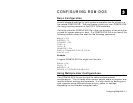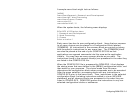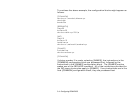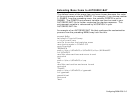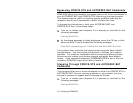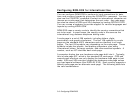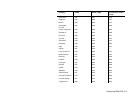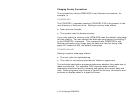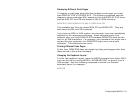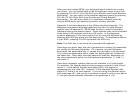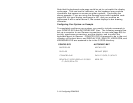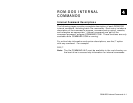
3-8 Configuring ROM-DOS
Configuring ROM-DOS for International Use
You can configure ROM-DOS to conform to local conventions for date,
time, and currency formats by giving the COUNTRY= command. You can
also use the COUNTRY command to select an international character set
(known as a code page) that determines the sort order. Any code page
can also be shown on EGA and VGA displays by loading DISPLAY.SYS.
You can re-map a keyboard to provide support for various languages and
layouts by running KEYB.COM.
ROM-DOS uses a country code to identify the country conventions that
are to be used. In most cases, the country code is the same as the
international long distance telephone dialing code.
A code page is a set of 256 symbols, including letters, digits,
punctuation, and graphic characters. The first 128 symbols in a code
page are the standard ASCII characters and are identical in all code
pages. The last 128 symbols vary depending on the code page. These
symbols include the graphic, line-drawing characters, plus many
international letters, currency symbols, and other assorted symbols. A
number, such as 437 identifies each code page.
A computer display has one hardware code page built into it. Typically,
this is code page 437, which is the standard US code page. CGA and
monochrome monitors can only display the hardware code page in text
mode. EGA and VGA monitors display the hardware code page unless
you load special software (like DISPLAY.SYS). Each country supports a
default code page and an alternate code page. The following table lists
the valid combinations.




